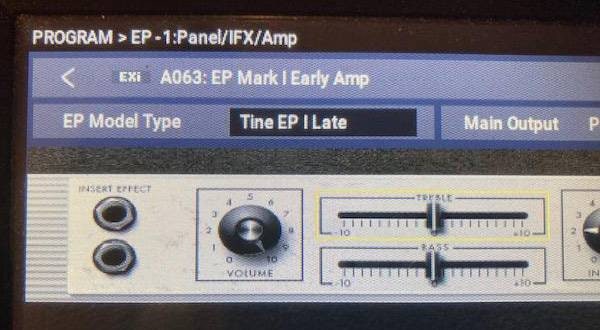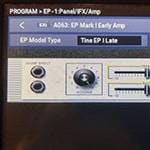Hello!
My name is Takuto Fujioka, guitarist in an acoustic unit called BABY BABY and an occupational therapist.
Thank you for always reading!
Some people may be spending more time at home because of COVID-19. At times like this, I have more time to play the guitar! I want to have a positive take on the situation.
Today I would like to ask guitarists reading this column if you’ve had the following problem.
- You often play the wrong string when playing arpeggios
- The picking strength is unstable
- You play a string that is different from the one you aimed for with a single note
Have you ever been bothered by these things?
This column is regarding a problem that most guitarists are concerned about at least once (?),
I would like to look at how to "stabilize picking".

By the way, all three of the above concern me. Lol
I've been playing the guitar for about 14 years now, but I've been in a long slump for about 4 years. No matter how much I practice a phrase and become able to play it on the spot, I often made mistakes during rehearsals and live performances.
I didn’t know the cause for a long time, and even after trying various exercises, it didn't improve. I was worried about what was different from myself and other people, and even wondered if I wasn’t suited to playing the guitar.
At that time, I remembered what was important when using my arms and hands from the perspective of an occupational therapist. It was the foundation of the arm, “stabilizing the scapula.”
First of all, I would like to briefly explain the scapula.
You may have heard the name scapula, but many people don't know what it actually looks like.
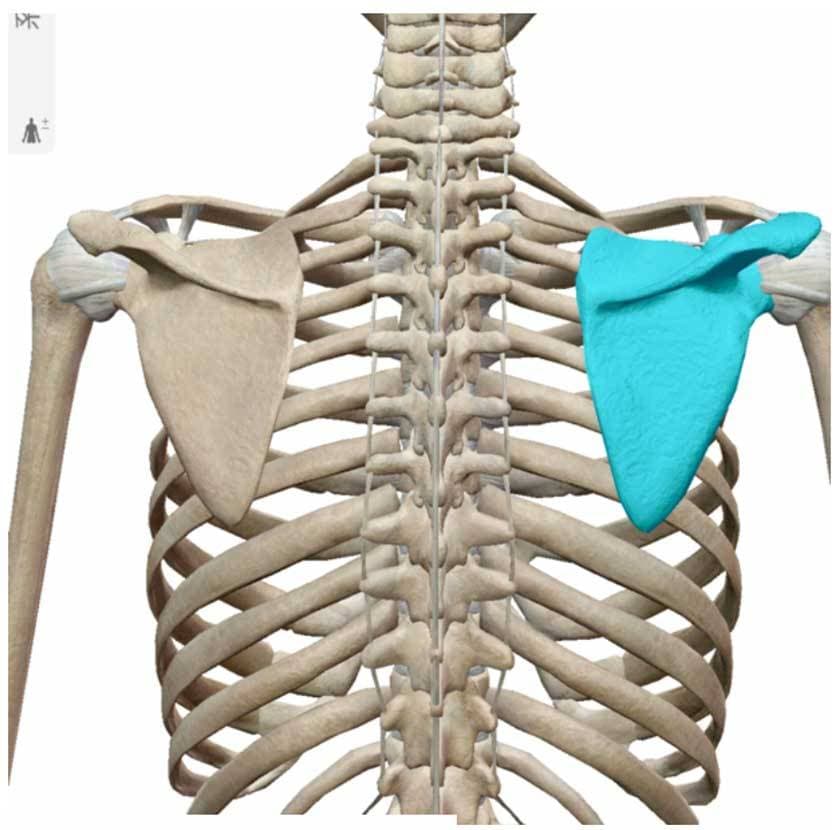
The shape of the bone is triangular, and if you look closely, it looks like it is floating in the air.
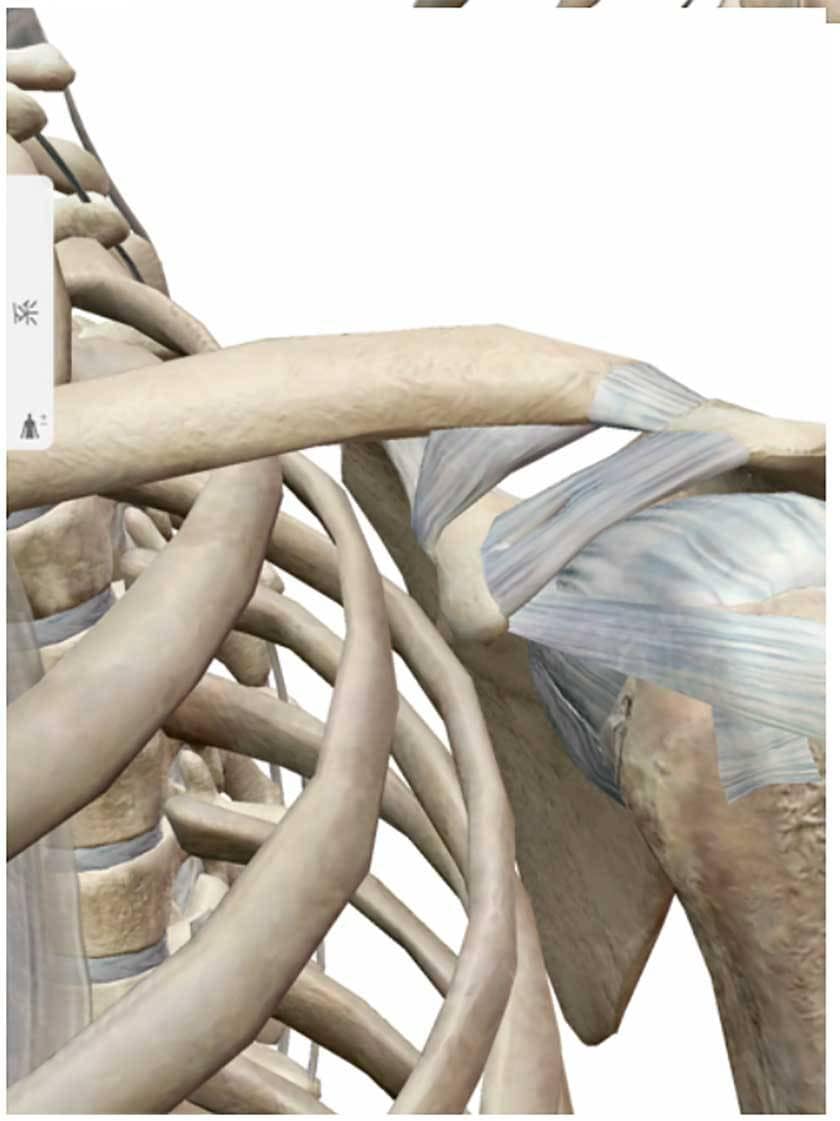
As you can see from this angle, the scapula is not directly attached to the trunk. It is connected to the trunk via the clavicle.
The arm is connected to the floating bone. Isn’t that unstable?! Lol
If you look only at the bones, it’s almost like you could easily remove it.
So how do you fix such an unstable scapula?
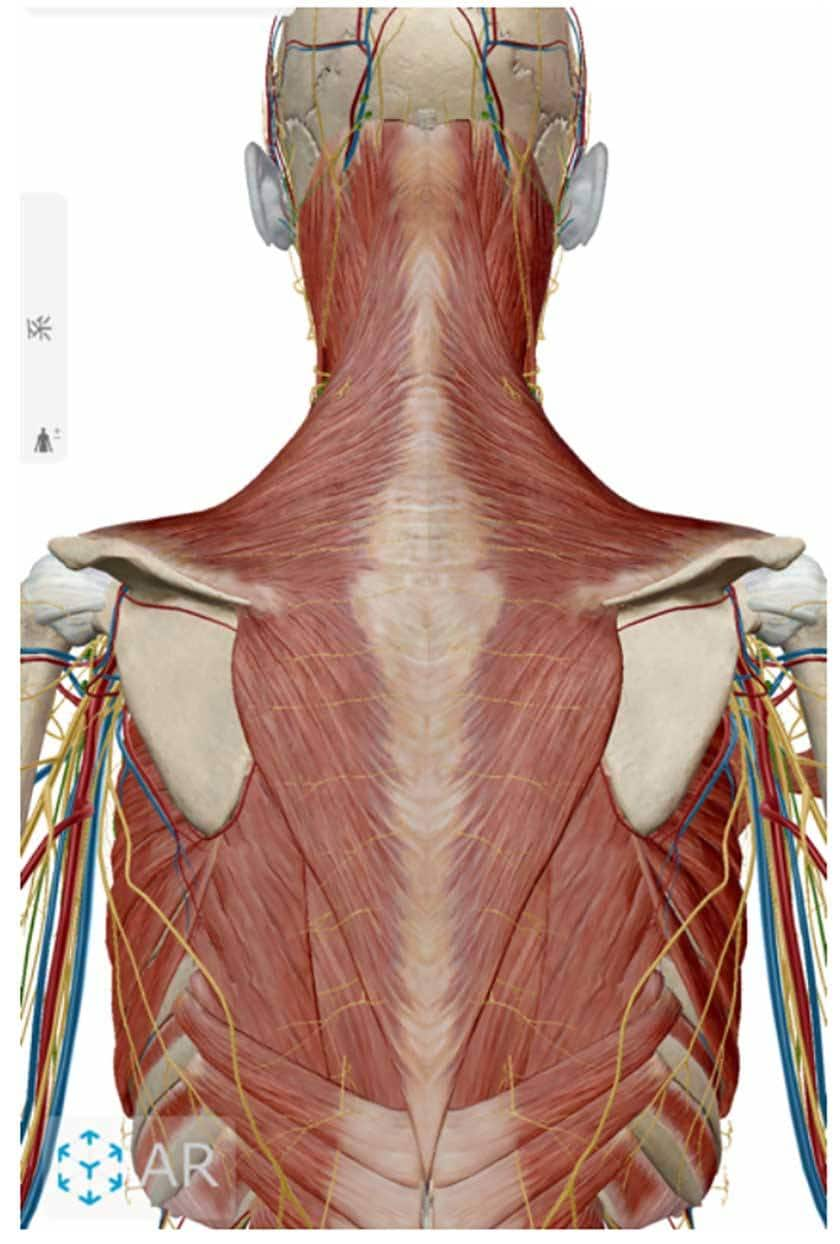
In fact, there are many muscles of various sizes around the shoulder blades, which are connected to the body so that the bones will not come off. It's a great structure, isn't it? The very detailed design of the muscles keeps the scapula in the correct position. I won't introduce all the muscles here, but I will introduce the muscle that I think are important for "stabilizing picking".
It’s a muscle called the rhomboid muscle.

The rhomboid muscle actually consists of two muscles, the rhomboid major muscle and the rhomboid minor muscle. If you consider them separately, this would be a detailed article, so this time I will collectively call the two the rhomboid muscles. The rhomboid muscles play a role in stabilizing the scapula by moving it toward the spine.
In my case, the rhomboid muscle on the right side was weaker than on the left side, and the position of the scapula was separated outwards from the original position. (Probably due to poor posture ...) Since many modern people have stoops, the positions of the shoulder blades are often separated outwards. If this happens, the rhomboid muscles will not be able to exert their original strength and will gradually deteriorate.
If the muscles around the scapula, not just the rhomboid muscles, become weak, the scapula, which has been in the correct position with a fine balance, becomes unstable.
If the scapula, which is the base, becomes unstable, it will be difficult for the upper arm, forearm, and hands connected to it to move stably.You wouldn't be able to perform delicate movements such as picking with your arms not being supported in a stable manner.
However, to put it another way, if the scapula is stabilized in the correct position, the operability and stability of the upper arm, forearm, and hand can be improved. In other words, if you train the muscles around the scapula (rhombus muscle this time) in a well-balanced manner, picking will be stable!

Finally, I would like to teach you the (?) how to train your Rhomboid muscle in a way that I devised for guitarists!
First, prepare a hard case.
It is a substitute for dumbbells. Lol
If you don't have a hard case, you can use an ordinary guitar case, an effector board, or a bag. If it is too heavy, it will put too much strain on your shoulders, so keep it at 5 to 7 kg even if it is heavy.
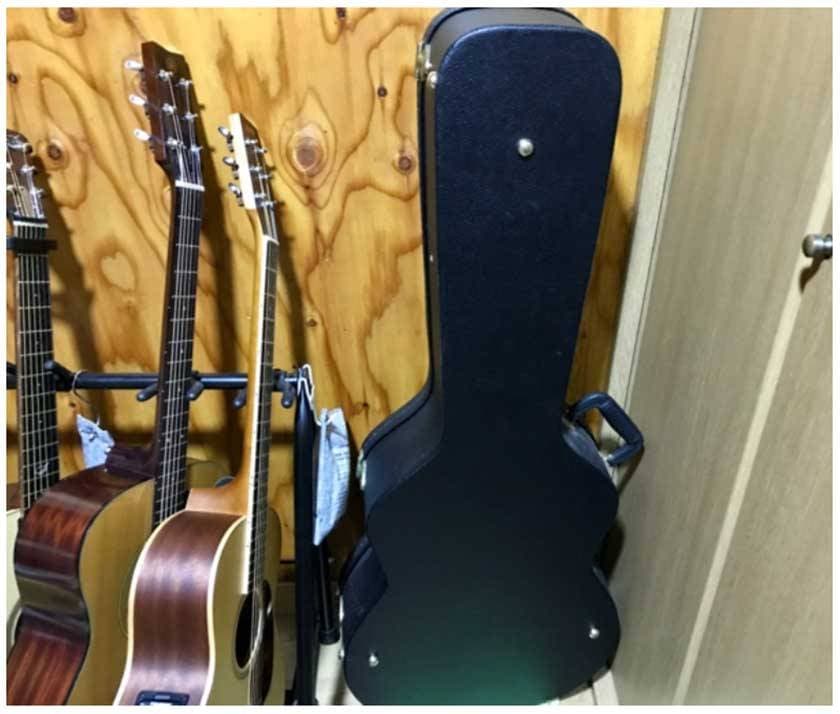
2.Hold the hard case.

3.Rotate the entire arm from the base of the shoulder and rotate the hard case to just behind the body. Then, move the inside of the scapula imagining it moving toward the spine.
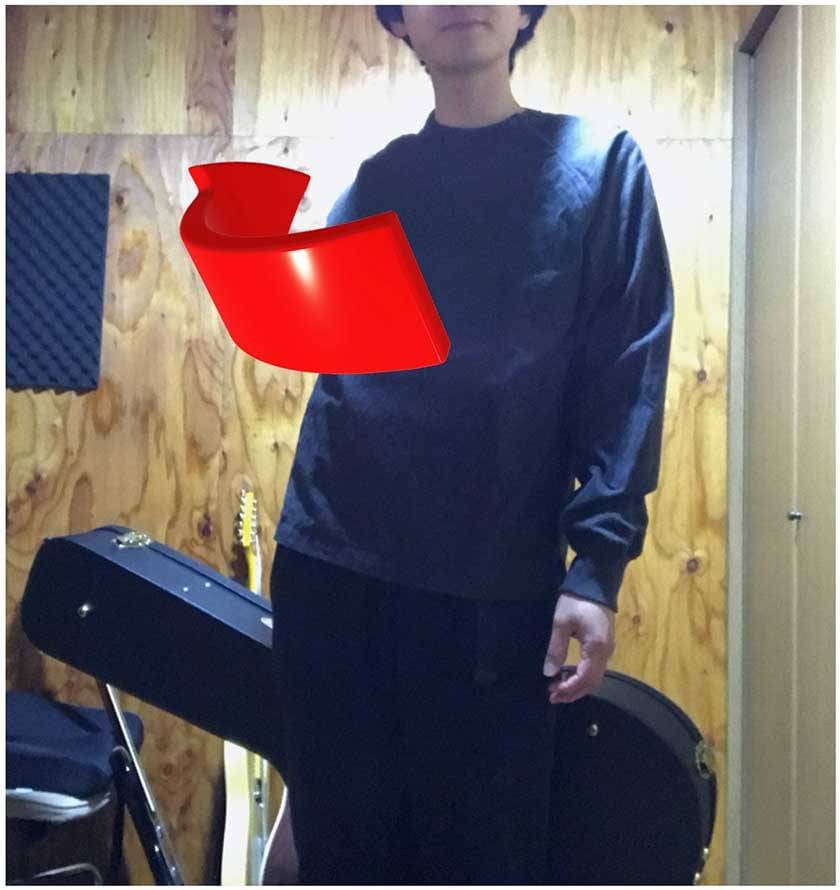
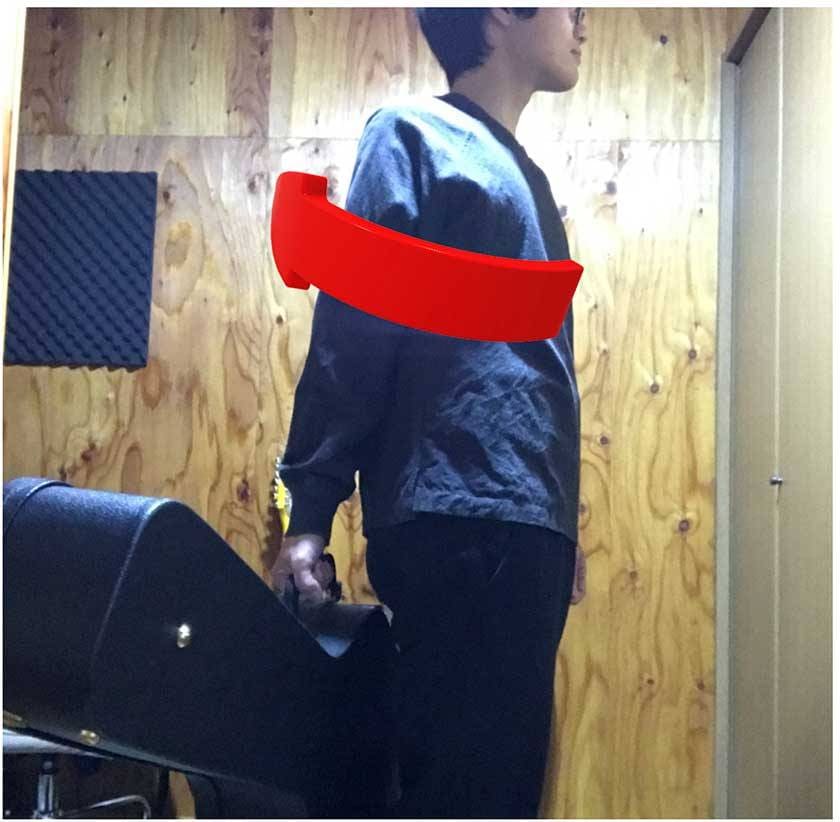
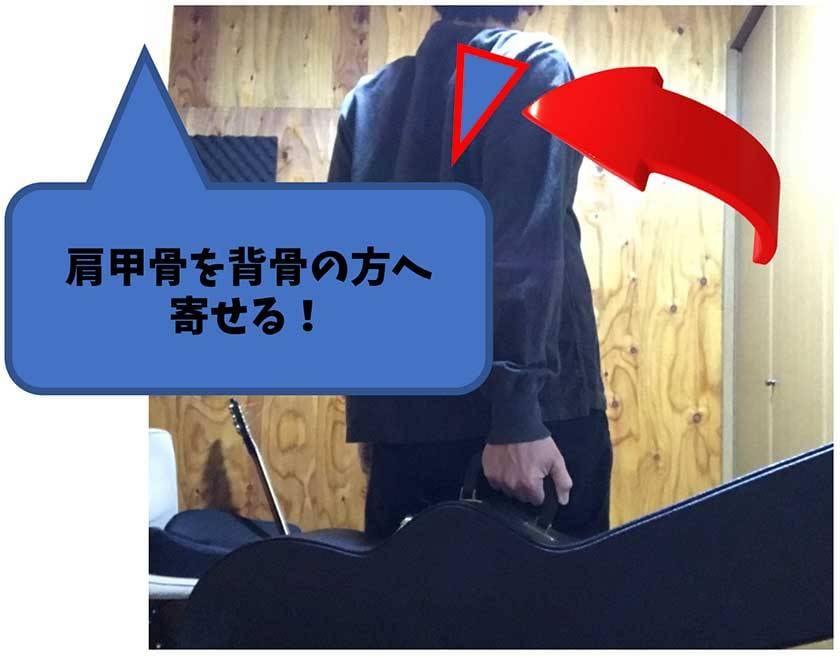
The point is to pull the scapula inward while turning the arm firmly from the base of the shoulder. Hold for 5 to 10 seconds. I think that 2-3 times is enough. It is more effective to work continuously every day than to increase the number of reps!
Don't overdo it if you feel a little tired! Even if you move it correctly without holding it, this will be effective. By the way, it is easier to feel the contraction of the muscles if you have some weight as you move it, but even if you do not have anything, if you move the shoulder blades as described above, the rhomboid muscles will contract, so you can do whichever you prefer!
If your shoulders rise or you feel pain around the base of your shoulders, you may be over-doing it, so do not put too much pressure around your shoulders and be aware of the inside and slightly above your shoulder blades. Move the shoulder blades inward. (Please imagine the position of the muscles by relying on the image above.) By the way, if you feel that the area around your flanks is also strong, that is excellent! If you feel any pain, stop immediately!
Weakness around the shoulder blades is often caused by poor posture.
In particular, those who do little exercise and elderly people tend to have weak muscles around the scapula, so there is a high possibility that they are having trouble playing. Also, if the rhomboid muscles work to restore the correct position of the scapula, it will also improve stiff shoulders and stoop!
Recently, I have also tried to exercise the scapula every day as much as possible. You can do this exercise even once to begin with! I think that you’ll be able to feel the stability of the guitar performance itself by stabilizing your body ( ^ω^ )
It is important not only to consider picking forms and practice methods, but also to look at your own body and review how to use your body from scratch!
That’s quite a lot of information, but how was it? I hope you found it helpful. Thank you for reading until the end!
Please look forward to next time!






